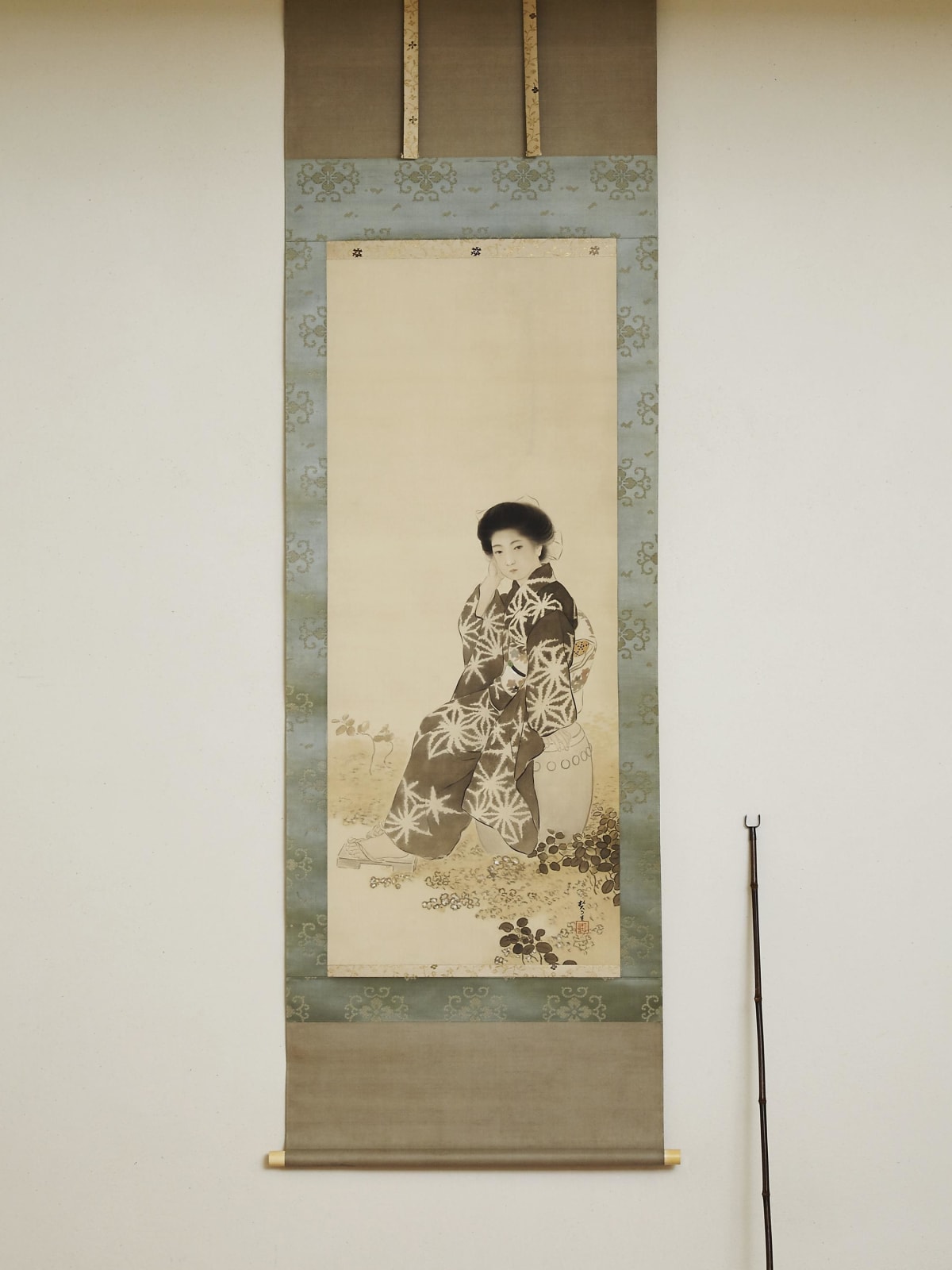Kikuchi Keigetsu (1879−1955)
Waiting for a Breeze
Color and gold on silk, hanging scroll
With a box signed by the artist, double boxed
Seal: Keigetsu
123.5 x 50.9 cm
214 x 65 cm (overall)
With a box signed by the artist, double boxed
Seal: Keigetsu
123.5 x 50.9 cm
214 x 65 cm (overall)
Further images
Perhaps in a family garden, or in its outskirt, a graceful young lady is waiting for a cool breeze. The stool where she sits seems to be the green ceramic seat of a popular table set still found in the postwar time. To coordinate with her kimono painted in thin ink, it is represented with lines and nearly without colors. The young lady appears at her late teens at a distance. However, close observations of her left hand fingers, the width of her right wrist, her face and her body reveal that she might be a primary school girl. Realizing this, the left sleeve of her kimono looks to have been adjusted to fit her growing body. Although we have no idea about her name, age, nor the place, it is enjoyable to imagine how she felt when she saw this finished work over a hundred years ago during the Taisho Period.
Kikuchi Keigetsu (nihonga painter; 1879-1955)
Nagano-born nihonga painter. Learnt nanga under Utsumi Kichido. Later became a student and son-in-law of the Shijo school painter Kikuchi Hobun. Developed his own figure painting style that is based on Yamato-e classical Japanese tradition. Established Kikuchi-juku, a private school devoting to the cultivation of young painters. Appointed Kyoto City School of Arts professor and principal.
Kikuchi Keigetsu (nihonga painter; 1879-1955)
Nagano-born nihonga painter. Learnt nanga under Utsumi Kichido. Later became a student and son-in-law of the Shijo school painter Kikuchi Hobun. Developed his own figure painting style that is based on Yamato-e classical Japanese tradition. Established Kikuchi-juku, a private school devoting to the cultivation of young painters. Appointed Kyoto City School of Arts professor and principal.









